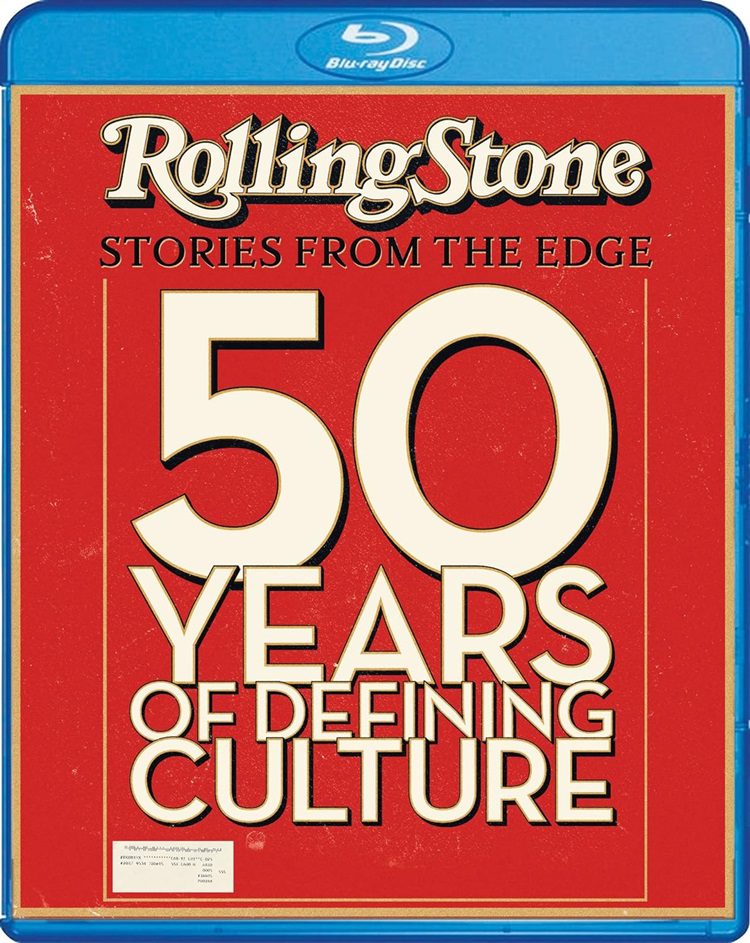
Originally a two-part documentary on HBO, broken down into six episodes across two Blu-ray discs for this Shout Factory! release, Alex Gibney and Blair Foster’s Rolling Stone: Stories from the Edge tells the story of the famed magazine, and that of the United States during its run, by highlighting its major articles.
The documentary opens with the early days of the magazine when Jann Wenner, his wife Jane, and Ralph Gleason founded the magazine in San Francisco in 1967. It wasn’t just about the music that young people were into but a look at the culture also, both of which the mainstream were ignoring. The magazine’s focus on the counterculture helped usher it into the mainstream. Its first major get was a John Lennon interview in 1971. The magazine grew in stature when Hunter S. Thompson, who made no secret he was a huge McGovern supporter, was sent to cover the 1972 U.S. Presidential campaign. And again during the Patty Hearst kidnapping, trumping all other media because Rolling Stone had an inside, albeit dubious source.
Music of the youth changed, as it does with every generation. The hippies, both the performers and the audience, had grown up, and the new kids of the mid-’70s began looking to punk rock. Chuck Young ushered that into the magazine with a cover story on The Sex Pistols. Mikal Gilmore wrote about little-known The Clash, who gave punk a political focus. Jann admits he didn’t care for punk and still doesn’t, but as a good publisher he listened to people he trusted.
In 1977, San Francisco was no longer a scene, so they moved operations to New York, the hub of the publishing world, but a lot of the original staff didn’t go, leading to an inevitable change with the magazine. Robert San Anson, a journalist for New Times, noted that “Rolling Stone should be by its existence somehow threatening to the establishment. Instead it’s become the establishment in a way.”
A division was happening as the magazine wanted more advertisers and success. There was more of focus on culture and actors than music. Thompson’s last hurrah with the magazine appears to be the Pulitzer divorce, which found him exploring Palm Beach society and tabloid journalism. There was also a story about Jimmy Swaggart, who was a cousin of Jerry Lee Lewis and Mickey Gilley.
Alan Light talks about hot vital rap / hip-hop were in the ’90s but he couldn’t get Public Enemy on the cover after “three or four world-changing records” while Nirvana, a rock band, gets it after one big song. Ice-T had a hit with “6 in the Mornin’,” one of the first gangsta rap songs. He then wants to rock and creates Body Count, He was frank in speaking about the controversy of “Cop Killer” and what he learned from it.
Bill Clinton, the first Baby Boomer candidate, seemed a natural fit for the magazine. There was a big sit-down interview with Jann, Thompson, P.J. O’Rourke, and William Greider. Thompson was disappointed with Clinton’s refusal to take on gun and drug laws. Ultimately, many more would be disappointed with Clinton before his presidency ended. What might be disappointing for viewers is the doc skips over alternative, metal, grunge, industrial, and moves onto the Teen Pop of the late ’90s with its boy bands and female singers, particularly a focus on the rise and fall of Britney Spears.
In the 21st century, Rolling Stone wanted to get back to its political writing. With Obama, Jann endorsed a candidate before he got the nomination. Michael Hastings interviewed four-star General Stanley McChrystal, commander of U.S. and NATO forces in Afghanistan, and exposed his disrespect for his superiors. His eventual firing led to the magazine becoming the story as many in the media felt Hastings broke an unwritten rule in dealing with military leaders.
The magazine broke an even greater rule in 2015 with Sabrina Rubin Erdely’s story about a gang rape at the University of Virginia. Unfortunately after publication, the subject of the piece had discrepancies in her story. Jann and Will Dana, managing editor at the time, take the blame. The Columbia School of Journalism investigated and the magazine printed their result.
It was great to see and hear from contributors such as Annie Leibovitz and Cameron Crowe, who offer their reflections on what occurred. Jeff Daniels is the narrator and reads from articles, except for Thompson’s work which was read by Johnny Depp. Kudos go to the music supervisors. Their outstanding song selections pair well with the stories being told. The archival concert footage of artists such as Jimi Hendrix, Ike & Tina Turner, The Rolling Stones, Bruce Springsteen, The Ramones, et. al will make you wish they wouldn’t cut away.
The Blu-ray video has been given a 1080p encoded transfer displayed at 1.78:1. The modern-day footage looks very good, but the archival footage is of varying degrees of quality, as expected. The audio comes in DTS-HD Master Audio 5.1 but doesn’t make much use of the surrounds. The dialogue is clear and the music has strong fidelity. Disc 2 contains bonus interview clips from Cameron Crowe (4 min), Ice-T (2 min), Gus Wenner (2 min), Jane Wenner (3 min), Janet Reitman (3 min), Matt Taibbi (3 min), and Victor Juhasz (3 min).
While the documentary is not as tough on Rolling Stone as the magazine has been with the subjects it has dealt with, Stories from the Edge is an entertaining trip down memory lane even if it can’t help but mythologize. There will likely be some disappointment as there’s no way to cover 50 years of music and culture in 4.5 hours, but what it does deal with, it does very well.